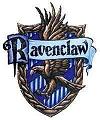 After leaving the Mogollon Rim and following the volcanics along Corduroy Creek, Salt River Canyon opened out shortly before reaching the Becker Butte Lookout on the north side. Traveling down the north side of the canyon is to travel downsection and down through time because the Paleozoic and Mesozoic strata dip northward, with a great deal of missing time. The caprock of Becker Butte is made up of the Devonian Martin formation, composed of the competent cliff-forming layers of limestone , with mudrocks and shales underlying the gentler, slopes on which the trees are growing. The Martin formation rests upon a sill intrusion of Devonian age. The Cambrian, Ordovician and Silurian periods are entirely missing in the canyon.
After leaving the Mogollon Rim and following the volcanics along Corduroy Creek, Salt River Canyon opened out shortly before reaching the Becker Butte Lookout on the north side. Traveling down the north side of the canyon is to travel downsection and down through time because the Paleozoic and Mesozoic strata dip northward, with a great deal of missing time. The caprock of Becker Butte is made up of the Devonian Martin formation, composed of the competent cliff-forming layers of limestone , with mudrocks and shales underlying the gentler, slopes on which the trees are growing. The Martin formation rests upon a sill intrusion of Devonian age. The Cambrian, Ordovician and Silurian periods are entirely missing in the canyon. At the Becker Butte pull-out, two plaques have been erected in honor of Gustav Becker (1856 - 1940), "Pioneer, Merchant, Trailblazer and Roadbuilder--A father of US 60"; and his son, Julius Becker (1886 - 1959), "His life was based on the Principles of his Father". They were both from the first family of Springerville, Arizona, and both made their mark on the Rim Country, and are remembered for their devotion to the place.
 Looking down-canyon, from a switchback on the north canyon wall, one can see back to the north rim. The inner canyon at the bottom is composed of pre-Cambrian rocks around a billion years old, that are overlain by the Paleozoic and Mesozoic sedimentary rocks. The heights are composed of the Mesozoic Red Wall Limestone which preserves at its top an ancient karst topography. It is underlain by the Martin, with its limestone cliffs and shale and mudrock slopes that fall steeply to the inner canyon and the Salt River. Upon crossing the river itself, one crosses not only from the Fort Apache--White Mountain Apache Reservation to the San Carlos Apache Reservation, but also from the Paleozoic back in time to the Middle pre-Cambrian age. The south canyon wall is composed entirely of pre-Cambrian sediments, many of them hardened by high temperatures and pressures, and metamorphosed into quartzite and marble.
Looking down-canyon, from a switchback on the north canyon wall, one can see back to the north rim. The inner canyon at the bottom is composed of pre-Cambrian rocks around a billion years old, that are overlain by the Paleozoic and Mesozoic sedimentary rocks. The heights are composed of the Mesozoic Red Wall Limestone which preserves at its top an ancient karst topography. It is underlain by the Martin, with its limestone cliffs and shale and mudrock slopes that fall steeply to the inner canyon and the Salt River. Upon crossing the river itself, one crosses not only from the Fort Apache--White Mountain Apache Reservation to the San Carlos Apache Reservation, but also from the Paleozoic back in time to the Middle pre-Cambrian age. The south canyon wall is composed entirely of pre-Cambrian sediments, many of them hardened by high temperatures and pressures, and metamorphosed into quartzite and marble.  Looking upstream from Hieroglyphic Point at weathered diabase intrusion, itself intruded by lighter veins of metamorphics (including asbestos), also weathered. The diabase intrudes a middle pre-Cambrian granite, and is therefore younger, upper-middle to lower upper pre=Cambrian.
Looking upstream from Hieroglyphic Point at weathered diabase intrusion, itself intruded by lighter veins of metamorphics (including asbestos), also weathered. The diabase intrudes a middle pre-Cambrian granite, and is therefore younger, upper-middle to lower upper pre=Cambrian.Beyond the diabase, one can see a ridge of columnar jointed quaternary basalts that are as young as the diabase is old. Beyond the basalts in the background--and across the river--are the Paleozoic and Mesozoic rocks of the north face of the canyon, showing clear stratification.
Hieroglyphic Point's name originates in petroglyphs that were pecked into the canyon wall with sharp rocks. They are the youngest features of all here, hardly varnished by the desert winds, they are a mere 1000 years old, mas or menos.
 Climbing out of Salt River Canyon and moving on south toward Globe, Arizona, we enter the Tonto National forest, growing on thin soils resting on pre-Cambrian granites and quartzites also intruded by pre-Cambrian diabase. In a road cut near milepost 272 is exposed the tan and pink granite, which is deeply weathered into square blocks. Down and to the left in the picture, one can see the contact with part of a diabase sill. The sill-penetrated granite steps down southward along a series of faults that keep the highway near its surface for sometime, before the overlying upper pre-Cambrian Apache group makes its appearance in road cuts near Seven Mile Wash. The Apache group is made up of mostly unmetamorphosed sedimentary rocks upon which the road descends into the Gila River drainage and Globe.
Climbing out of Salt River Canyon and moving on south toward Globe, Arizona, we enter the Tonto National forest, growing on thin soils resting on pre-Cambrian granites and quartzites also intruded by pre-Cambrian diabase. In a road cut near milepost 272 is exposed the tan and pink granite, which is deeply weathered into square blocks. Down and to the left in the picture, one can see the contact with part of a diabase sill. The sill-penetrated granite steps down southward along a series of faults that keep the highway near its surface for sometime, before the overlying upper pre-Cambrian Apache group makes its appearance in road cuts near Seven Mile Wash. The Apache group is made up of mostly unmetamorphosed sedimentary rocks upon which the road descends into the Gila River drainage and Globe.  Globe, Arizona is a gold and copper mining town that sits on the Gila Conglomerate. Globe and the mining town of Miami sit on the north end of a graben--a downfaulted area-- that extends southeast to Safford. During Pliocene time (roughly 5.2 - 1.25 years before present), the mountains rising around the graben dumped 1500+ vertical feet of their own downwasting on it. During Quaternary time, the Gila River established through drainage here, carving the terraces upon which the town of Globe is built. These terraces give Globe the steep roads that seem to rise straight up out of the Gila River valley along which US 60 runs.
Globe, Arizona is a gold and copper mining town that sits on the Gila Conglomerate. Globe and the mining town of Miami sit on the north end of a graben--a downfaulted area-- that extends southeast to Safford. During Pliocene time (roughly 5.2 - 1.25 years before present), the mountains rising around the graben dumped 1500+ vertical feet of their own downwasting on it. During Quaternary time, the Gila River established through drainage here, carving the terraces upon which the town of Globe is built. These terraces give Globe the steep roads that seem to rise straight up out of the Gila River valley along which US 60 runs.It is lunchtime in Globe, 3400 feet above Sea Level, and at noon, the temperature is much warmer than it was leaving Show Low, 8000 feet at 9:30 AM. This is a good time for a break before heading through Arizona's Copper country and into the desert basins south of Phoenix.
I consider taking fewer pictures in order to get to Yuma close to when my friend's plane will arrive there. She is already landing in Phoenix, I think, which is not far away, although the winding roads in the mountains make the city seem like it must be another world.






































































